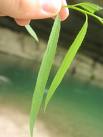Southwestern Black Willow Tree Information
Images of Southwestern Black Willow:






Southwestern Black Willow grows in the following 41 states and provinces:
Alabama, Arkansas, Colorado, Connecticut, Delaware, Florida, Georgia, Illinois, Indiana, Iowa, Kansas, Kentucky, Louisiana, Maine, Manitoba, Maryland, Massachusetts, Michigan, Minnesota, Mississippi, Missouri, Nebraska, New Brunswick, New Hampshire, New Jersey, New York, North Carolina, North Dakota, Ohio, Oklahoma, Ontario, Pennsylvania, Rhode Island, South Carolina, Tennessee, Texas, Utah, Vermont, Virginia, West Virginia, WisconsinInformation about Southwestern Black Willow:
The Salix Nigra is commonly known as the Black Willow, Gulf Black Willow, Scythe-leaved Willow, Southwestern Black Willow as well as Swamp Willow.
The currently accepted scientific name of black willow is Salix nigra Marsh. . Recognized varieties are S. nigra var. nigra Marsh., S. nigra var. altissima Sarg., S. nigra var. falcata (Pursh.) Torr., and S. nigra var. lindheimeri . Salix nigra, S. gooddingii Ball, and S. amygdaloides Anderss. are closely related taxa commonly referred to as the black willows . The three species are not easily distinguished morphologically, and in fact, some authorities consider S. gooddingii to be S. nigra var. vallicola Dudley or S. n. var. venulosa (Anderss.) Bebb. . S. amygdaloides is sometimes considered to be S. nigra var. amygdaloides Anderss. . For our purposes, however, these varieties will be considered as separate species. S. nigra hybridizes with S. amygdaloides (S. X glatfelteri Schneider); S. alba (S. X hankensonii Dode); and S. lucida (S. X schneider Boivin) .Black willow is found throughout the eastern United States, adjacent parts of Canada, and Mexico. Its range extends west from southern New Brunswick and central Maine to Quebec, southern Ontario, central Michigan, southeastern Minnesota, and eastern North Dakota. It occurs south and west to the Rio Grande just below its confluence with the Pecos River; and east along the Gulf Coast through the Florida Panhandle and southern Georgia . Black willow has been introduced in Utah where it is now common along many streambottoms .Black willow occurs as a codominant in some early seral floodplain communities . It codominates with sandbar willow (Salix exigua) on floodplains having the greatest water depths and the longest hydroperiods of any of the shallow freshwater swamps of the southern United States . Black willow also codominates with eastern cottonwood (Populus deltoides) in the lower Mississippi Valley . Published classifications listing black willow as a codominant in community types (cts) are listed below: Area Classification Authority S. U.S. southern swamp & Penfound 1952 marsh cts AR,MS: Lower cts Shelford 1954 Mississippi Valley Some of the information provided here is attributed to:Tesky, Julie L. 1992. Salix nigra. In: Fire Effects Information System, [Online]. U.S. Department of Agriculture, Forest Service, Rocky Mountain Research Station, Fire Sciences Laboratory (Producer). , available at the USDA Fire Effects Information System (FEIS) website